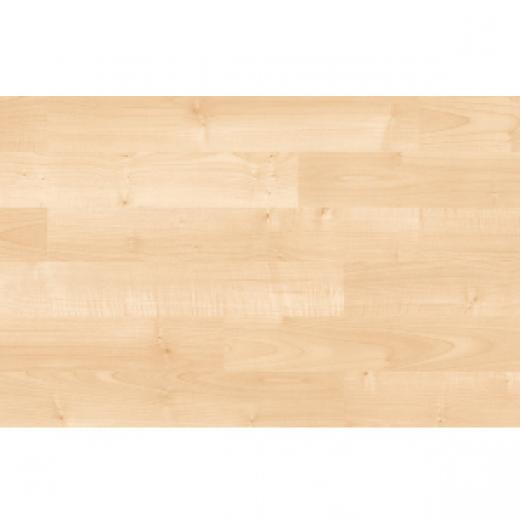A brief history of décor - Laminate flooring through the ages
20 April 2007
When you take a look at the history of laminate flooring – which is still only very recent – an incredible amount has happened in décor development. At the end of the 1980s, the first laminate floorings arrived onto the European market from Sweden. Reproductions of light woods were the talk of the town, in either beech or maple in a ship’s deck pattern. These are referred to as first-generation laminate floorings and were still comparatively simple in terms of décor patterns. Only a few years later, they were replaced by more sophisticated décors and other formats.
Farmhouse floorboards and the 2-strip design are characteristic of this second phase in décor development and were turned out in considerably darker and redder woods. Oak, cherry and walnut set the trends in the first half of the 1990s, when even exotic woods such as teak and palisander were already available. The trend led to the development of décor surfaces for laminate flooring that were the most authentic reproductions possible. Parquet became very much the archetypal look of its time. The industry attempted to achieve a close approximation to the product, not just in terms of the look but also in the pattern. Parallel to this, the "tile" idea came to the fore among décor designers, who experimented with tile formats in slate, marble and granite.
Décor development took a quantum leap with the development of synchronized grain and pore printing at the end of the 90s, with authenticity in laminate flooring surfaces achieving a degree of perfection which had never been seen before. Tactile wood structures,realistic V-joints, the hand-scraped look and Embossed-In-Register: all of them by-words for third generation laminate floorings. Cherry and wengé are the main woods, as well as light oak, to dictate the design range here, alongside maple and beech. The color depictions for maple become more homogenous, while beech takes on a more diversified look. Increasingly, unusual exotic woods such as hickory, zebrano and bamboo come to the fore, as do distinctive fruit woods such as apple and pear. Stone décors also gain from the new synchronized grain and pore printing technology. Surface décor patterns now barely differ from the natural material and finally bring stone décor into luxury interiors. The Italian terracotta tile becomes a fashion icon par excellence.
The 4th generation – or the 3D look
What came next broke the mould of what was originally envisaged. The 3D look created depth with dramatic impact – whether in wood, stone or a creative décor – and came to dominate the product range. New printing techniques, such as laser printing and indirect gravure printing, complement the familiar processes. Retro-décors in dazzling greens and oranges with geometric patterns and floral motifs captivate with their optical depth. And equally innovative are the latest Industry-theme décors in gray, beige and black which are especially sought-after in the property sector. Overall, formats are becoming longer and narrower. Narrow floorboards 70mm in width or long formats up to 2 meters in length are setting the trend.
It’ll be fascinating to see what is still to come. Clearly, the creativity of designers in the development departments of laminate flooring manufacturers and décor printers knows no bounds. They’re working on new décor ideas, which are then realized alongside impregnators, whose knowledge of the technical behavior of décor paper during the laminating process is crucial to achieving a precise décor image. Hence, manufacturers, décor printers and impregnators are already collaborating intensively at a very early phase of décor development. That’s how more and more new creative décors evolve – and who knows: perhaps there'll soon be a fifth generation of laminate floorings.
Contact for press enquiries
Anne-Claude Martin
Press Officer
press(at)eplf.com
Rue Defacqz 52
B - 1050 Ixelles
Phone +32 2 788 31 68
